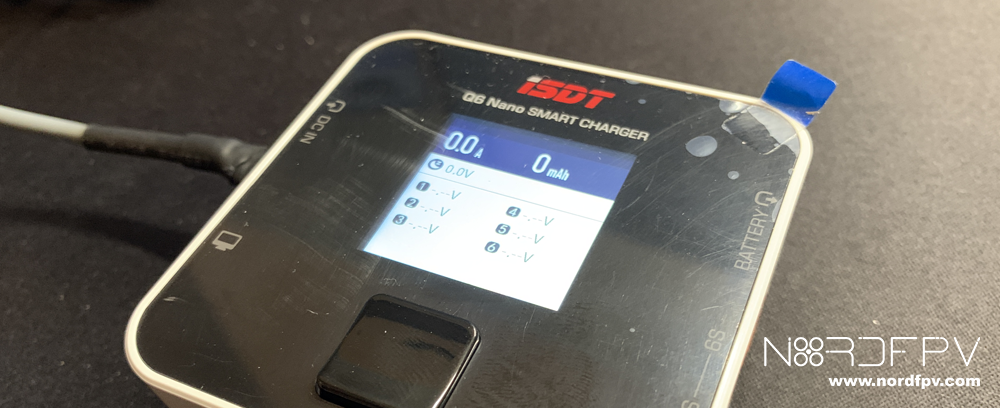
ISDT Q6 Nano - DC vs AC chargers
Share
When I started in the drone hobby I didn’t really understand why there were so many DC charger models vs. few AC chargers.
Watching some videos and getting some more experience have shown me some of the reasons.
To put it in very simple terms, the main difference is that AC chargers have a built-in power supply, while DC chargers don’t. Meaning an AC charger can be plugged into the wall directly out of the box, while a DC charger needs “another piece”.
A lot of newcomers buy a charger for their drone, to later realise it’s a DC charger and need an extra part, which is the power supply.
I have learned that the main use of a DC charger is to be able to charge in the field. A DC charger can use a (normally big) battery instead of a power supply, and give you the chance to charge your first packs while you are flying a second batch.
The second thing is that if by any chance you already own a power supply, because you bought it before, or because you have one around, then you can save some money.
In my case I had a laptop power supply, which gives only 70 Watt, which I can use to pair with this quite small and somehow affordable ISDT Q6 Nano.
I just clipped the 5.5mm connector, and replaced it with a XT60 and I have my setup ready. The only thing here to be careful with is to have the right polarity when moving from the 5.5mm to the XT60 connector. Normally the negative (-) is the outside of the connector, and the positive (+) is the inside. In my case, my power supply even had it specified as you can see in the picture.

5.5mm Connector

XT60 modified power supply
There’s a lot to know about Watts, current, and voltage when it comes to chargers, especially if you are parallel charging, or think about it. I won’t enter into many details for this, there are many good videos on the internet to understand it, but just to give a rough idea, your charger has a Watt/current limit, in the case of the Q6 nano is 200W/8A out, and your power supply will also have a limit, in my case 69.96W/5.83A. Whichever is smaller will limit what you can use to charge your batteries, and then that minimum number has to be divided by the voltage and current of your battery in order to know how many batteries you can charge in parallel using the Watt’s law W=Vx I ; W:Watts, V:Volts, I:Current(A).
So in the case of using a 4S battery which is 14.8 volts (max) with my power supply of ~70 Watt, you have around 4.7 Amps available to charge your battery ( I=70/14.8).
If your battery is 1500mA, it means you can charge a max of 3 of these batteries with this setup.
Another use case of DC chargers, and the reason why I got this one, is that they can be quite small, since the power supply is not included and you can play with what kind of power supply you want/need depending on your charging habits.
The Q6 Nano is super portable, and I wanted to have a small charger in my backpack. The laptop power supply is not that big either and as a separate item I can find the way to arrange them quite nicely in my backpack when I go on vacations. Of course I have the limitations about how many batteries I can charge at the time, as explained above, but as long as you are a bit organised, it’s something you can work around in favour of portability.
When it comes to the ISDT Q6 nano itself, I think it’s a nice device: Small, up to 200 W, I like the ISDT user interface a lot, it’s easy to understand, modern enough to be of this century, and you can do software upgrades using the USB on the left side of the unit.
The only two complains that I have so far are:
1.-There’s only one button to do all: The button in the middle has 3 functions, up, down and center. The center is quite difficult to push, and it can become a bit frustrating when navigating the UI
2.-I have not found a way to display internal resistance. Maybe I need to update the unit, because I’ve seen this function in every other ISDT charger so far.
I still think that most FPV beginners will benefit from an AC charger. I normally recommend a dual charger like the SkyRC D100-V2, but a DC charger can be very useful, and if you are a bit handy, and you have a power supply laying around from an old machine, you can even save some money.
Ah, and by the way, many AC chargers are also DC chargers, so you can use it at home and at the field, but in my opinion I want portability, and I don't think I will like to bring the AC charger I have at home to the field.
We have a short video showing up this device at: https://youtu.be/tb8qEC6s8cs
